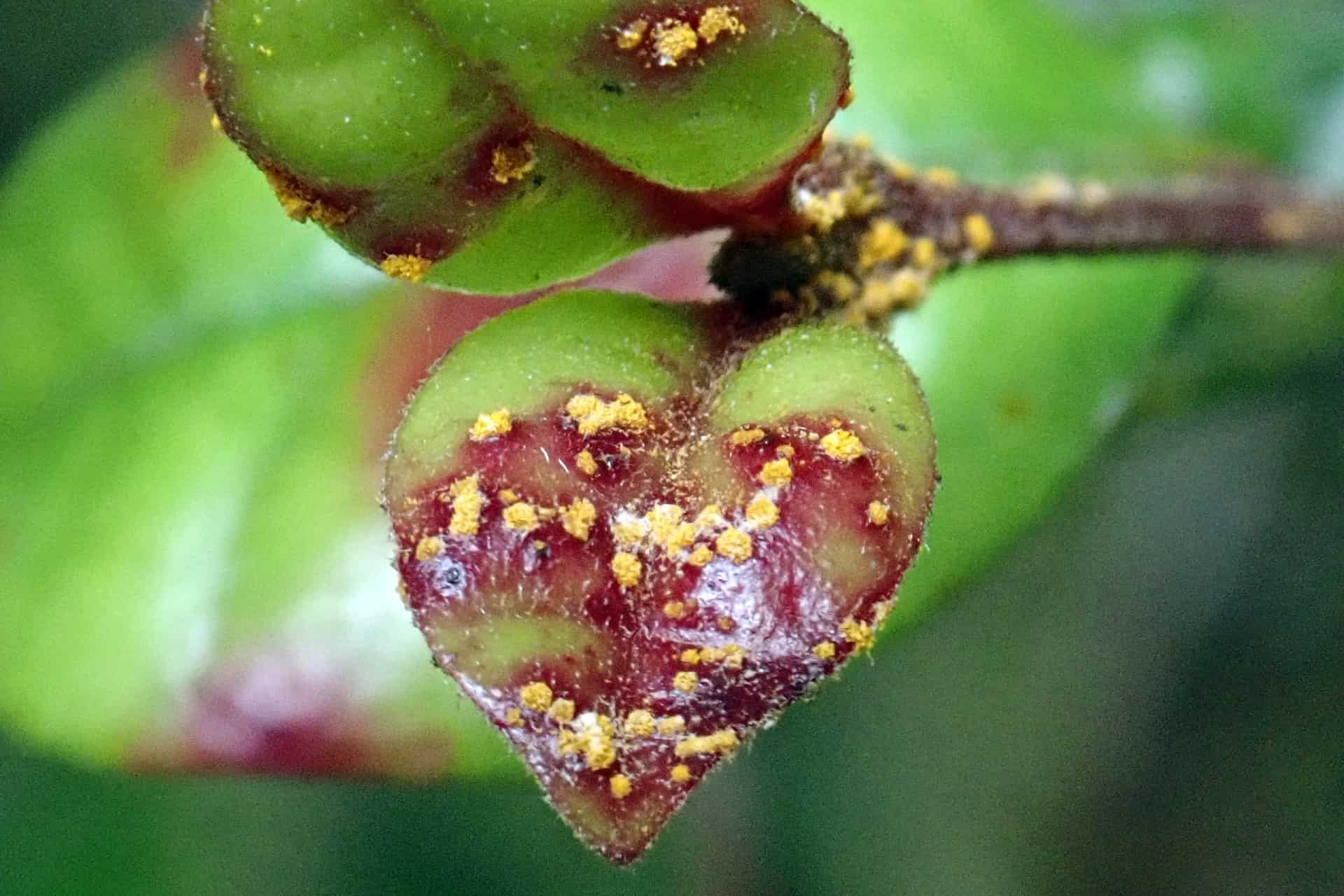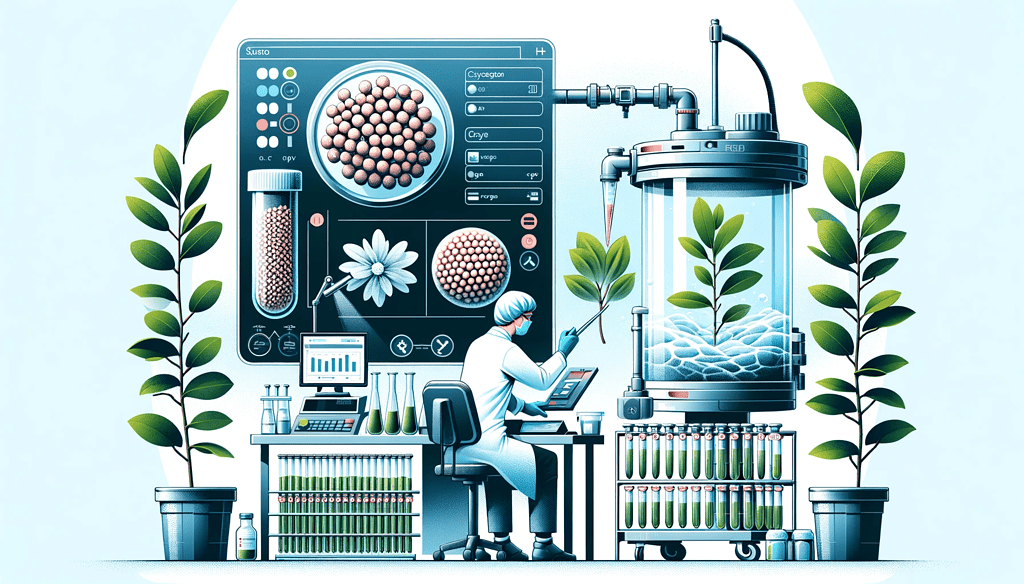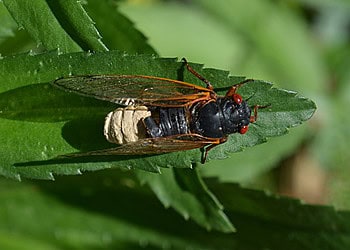
If I give you a person’s head or say a finger, could you freeze it and then create the whole person out of it? Well, it is not yet possible for us, but it’s now possible for plants.
Myrtle rust is a serious threat to plant biodiversity
An invasive fungal disease called myrtle rust is affecting hundreds of Myrtaceae family plant species in Australia.
Myrtle rust is caused by the fungal pathogen Austropuccinia psidii, and there are multiple myrtle rust strains. The current fungal pandemic strain already entered Australia in 2010 and spread up and down the East Coast. Last year, the disease was reported in Western Australia for the first time, raising great concern as this region contains an incredible amount of Australia’s Myrtaceae biodiversity.
For conservationists in Australia looking to protect plants from this fungal disease, it’s already desperation mode. So researchers at the University of Queensland (UQ) have devised a cryopreservation method that promises to solve this problem. The new method allows scientists to grow plants facing the risk of extinction in lab settings just by using their cryo-preserved tissues.
Saving Myrtle
Myrtaceae or the myrtle family comprises a large number of flowering plant species that are known for their strong aroma. These plants are believed to have originated in Australia and now they are found in other parts of the world as well. Plants like eucalyptus, rose apple, clove, and guava, also belong to the Myrtaceae family.
Unfortunately, Myrtle rust has affected over 380 plant species in Australia and New Zealand, 13 of which are already believed to have gone extinct, while another 43 are at high risk. Moreover, the researchers suggest that new strains of this fungi are also emerging in South America.
Plants are the direct target of the fungi but the threat is not just limited to them. The pandemic could also indirectly affect the population of many microbes, insects, and animals that depend on the Myrtaceae family for their different needs.
How cryopreserving plants can solve this problem
Cryopreservation is already used to store animal/human sperm, eggs, and embryos, as well as crop species such as bananas, sweet potatoes, and other root crops that are generally not grown using seeds, or that don’t survive seed banking.
However, each plant species has different requirements (light, humidity, temperature, medium).
Therefore existing cryopreservation methods can’t be used to save many plants that are on the brink of extinction.
“Unfortunately for plants, it is not a ‘one size fits all’ method. Each species can often need its own method and media recipe — so this can take a year or more to figure out even before we can start to cryopreserve the material,” Dr. Alice Hayward, one of the researchers at UQ’s Queensland Alliance for Agriculture and Food Innovation, told ZME Science.
To overcome this problem, the researchers designed a carefully curated method. They came up with a cryopreservation technique that works using plant tissue culture, allowing them to grow a whole plant using small pieces of plant tissues such as buds, leaves, or stems on a sterile nutrient media.
Once the tissue culture is ready, they place it in special growth rooms set to the perfect light and temperature conditions.
Hayward explained, “Once we can grow our plant species in culture, we can take cells or buds from the little plants and treat them with dehydrating and vitrifying solutions that act to remove water from the cells and also help turn the remaining water into a ‘glassy’ state.”
This is to stop the water from forming ice, which destroys the cells as it expands to form shards. However, removing water from cells and applying these solutions can also kill them. Therefore the researchers need to find a balance in this process so that they can protect the cells from ice damage, and also not kill them in the process.
Once the cells are safely dehydrated, they are placed in a bead of cryoprotectant solution, put in a tube, and immersed in liquid nitrogen.
Here they can be kept forever and ever until we bring them out, rewarm them in a rehydrating solution, and then grow plants from these restored cells.
The researchers used the shoot tips (buds) during their research. These buds contain stem cells that can grow into new shoots. They then used hormones to make the shoots form roots, and this is how they developed a whole new plant ready to grow.
While highlighting the future potential and significance of their cryopreservation technique, Dr. Hayward said:
“This method is valuable for any at-risk plant species that isn’t producing seeds or that produces seed that can’t be seed banked, and also where the seed isn’t genetically valuable. For example, in the case of many crop trees where the seed doesn’t have the same genetics as the high-performing mother tree, the industry can use cryopreservation to safely store their valuable material in case of emergency (e.g. natural disaster/climate change, etc).”
Cryopreservation has limitations but it is still worthwhile

There are many challenges with cryopreservation methods, for instance, it is not possible yet to directly take wild material into tissue culture.
Such samples are too contaminated with bacteria, fungi, and everyday germs found in the natural environment, making it impossible to clean the material for sterile culture without killing it.
“The tissue culture system is sterile, so all plant material going into cryo, and coming out, is handled in highly sterile conditions with specialized benches and decontamination procedures,” Hayward told ZME Science.
Moreover, cryobanks, the facilities where preserved plant tissues and plants are stored at freezing temperatures require a lot of money and resources to set up and maintain.
“However, once the infrastructure and methods are there, it can be cost-effective compared to field banking as huge volumes of plants can be stored in a relatively small space, safe from pests, disease, climate change, and natural disasters,” Hayward added.
The researchers have already developed protocols for avocado and are now working on Australia’s macadamia cultivars, with industry support, as well as six of the most critical Myrtaceae species.
Hopefully, their cryopreservation method will be a great success and help scientists worldwide save endangered plants from their many threats.
You can read more about the cryopreservation method here.





